If you’re looking for some interesting cacti to grow at home, both the dog tail cactus and the rat tail cactus could be among your top picks. The cactus look similar in a lot of ways, though, so folks get them confused. They have different care needs, different origins, and some distinctive differences in their aesthetics, though, so you’ll want to check that out before bringing any of these beauties home.
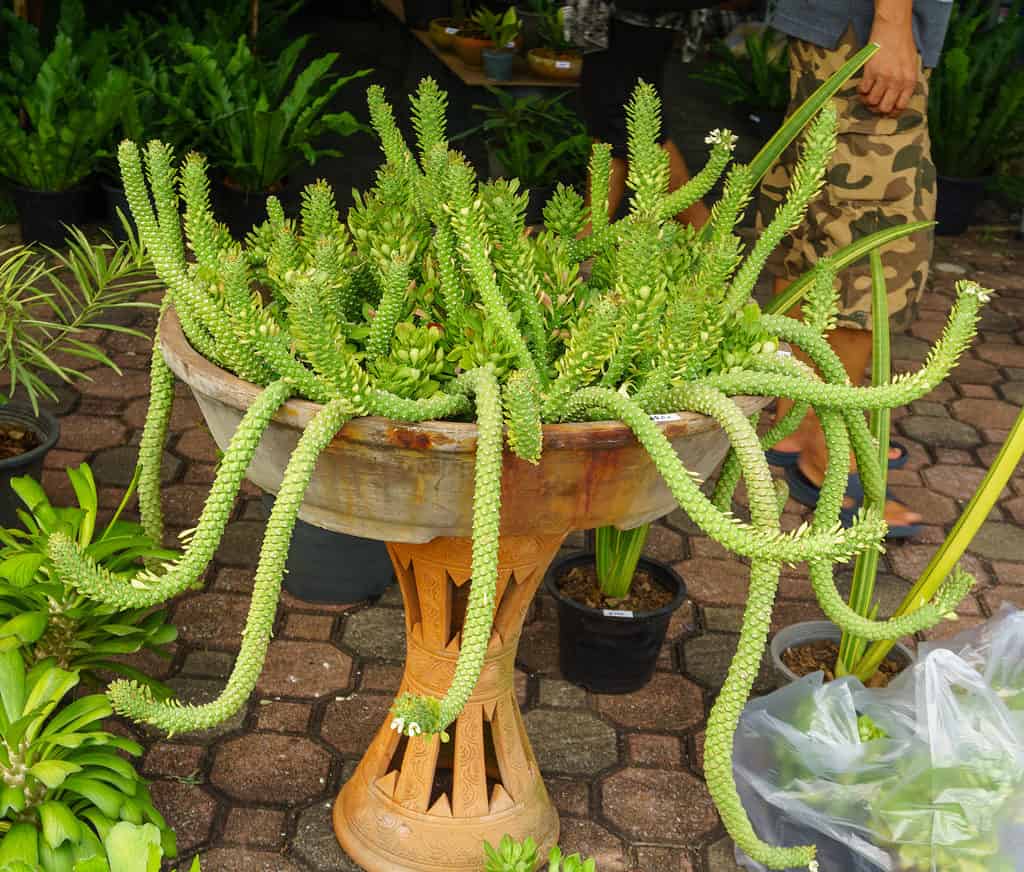
Rat tail cactus, Aporocactus flagelliformis hanging over planter
©moj0j0/Shutterstock.com
| Dog tail cactus | Rat tail cactus | |
|---|---|---|
| Classification | Strophocactus testudo | Disocactus flagelliformis (L.) Barthlott |
| Description | Dog tail cacti are long-stem cacti with trailing leaves covered in tiny, painful spines. They bloom with white or pink orchid-like flowers from March to July. | The rat tail cactus is a trailing cactus with tiny spines all over its long stems that droop. They begin green and turn gray and produce vivid magenta flowers. |
| Uses | The dog tail cactus is a frequent houseplant used as hanging pot cacti or often nestled into forest boxes of succulents and cacti. | The rat tail cactus is a popular indoor houseplant that is often found in container gardens, indoor planters, and in hanging pots. |
| Origins and growing preferences | Origins of the dog tail cactus aren’t precise, but it is believed that originated in the rain forests of South America. They need to be kept in temperatures between 40 and 85-degrees F and in fast draining soil. | The rat tail cactus originated in Mexico where it is now considered a threatened species. It is commonly found in homes where is should be planted in spaces that remain between 45 and 90-degrees F, with well-draining soil. |
| Special facts and features | Dog tail cacti thrive as hanging plants, thanks to the trailing stems that droop and show off their beauty through trailing leaves. They don’t belong to the orchid family, but they produce flowers that would be mistaken for orchids. | The rat tail cactus is extremely popular as a houseplant and is, in fact, one of the most popular home-grown cacti species. |
Key Differences Between Dog Tail Cactus and Rat Tail Cactus
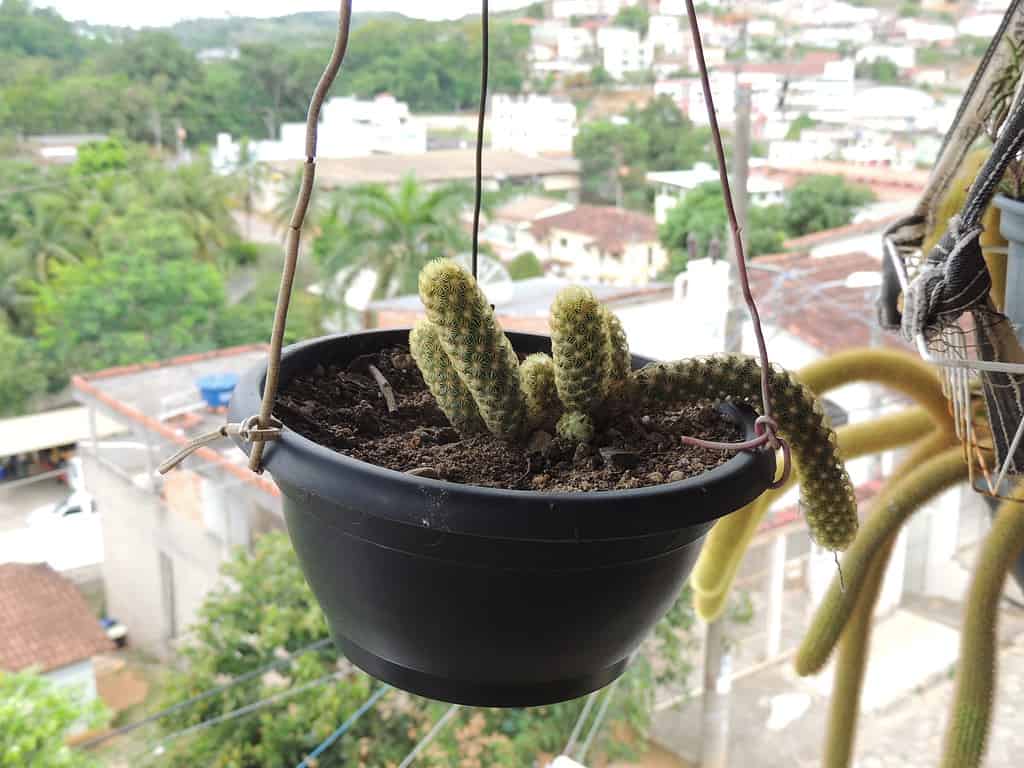
A healthy dog tail cactus will be green and vibrant with just the spines showing off yellow coloring.
©Nino Bautz/Shutterstock.com
The two cacti have some pretty strong similarities when you look at their basic forms. Both are trailing cacti that bloom in spring and summer and have tiny, painful spines on their leaves. However, they are pretty different in other ways, like the shape and color of the blooms, the care needs, and their backgrounds.
Dog Tail Cactus vs. Rat Tail Cactus: Classification
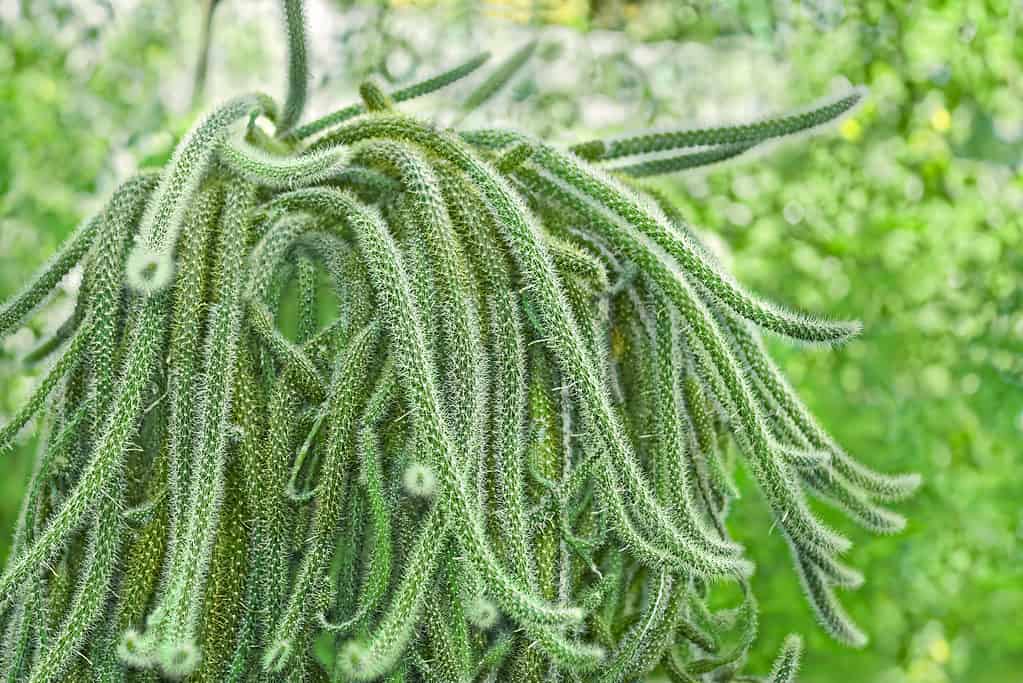
The rat tail cactus looks a bit like Medusa’s head.
©Marykit/Shutterstock.com
The dog tail cactus is known botanically as Strophocactus testudo. The plant belongs to the Cactaceae family, and is considered a perennial succulent. The mature size of a dog tail cactus may reach upward of 10 feet in length. The cactus may also be known as the Pitaya de Tortuga, and its young is often called a Puppy Dog Tail Cactus.
The rat tail cactus goes by Disocactus flagelliformis (L.) Barthlott botanically and also belongs to the Cactaceae family, but within the Disocactus genus. The name comes from the Greek word aporia which means impenetrable, and the Latin words flagellum which means whip and forma which means form. This name references the form or shape of the plant’s stems.
Dog Tail Cactus vs. Rat Tail Cactus: Description

Up close, the dog tail cactus appears to be almost completely covered in spines.
©chucklikesplants/Shutterstock.com
Dog tail cacti are known as long-stem cacti. They have long, trailing leaves or steams that often hit 100 inches or so in length when left to grow naturally. The leaves or stems are too thin and heavy to grow erect, so they trail down instead. The leaves are covered in tiny hairy-looking spines. They produce white and pink orchid-like flowers that are highly fragrant and bloom at night from March to July. The blooms last approximately 5 days each.
The rat tail cacti ascend at the base and then curve and branch out from the base, drooping for the same reason the dog tail cacti droops: the stems are thin and heavy and cannot stand erect. They start out green and eventually turn grayish. They have vivid, tubular magenta blooms that grow along the stems.
Dog Tail Cactus vs. Rat Tail Cactus: Uses

Rat tail cactus produces vibrant blooms.
©IKGM/Shutterstock.com
The dog tail cactus is well-suited as a houseplant, both indoors and outdoors (if you have the right climate) and is most commonly used as a trailing house plant grown in sunny windows. They are often grown in “forest” crates with various other succulents and cacti, as well, and sometimes may be found in container gardens.
The rat tail cactus is also a popular houseplant that thrives as an outdoor plant in warmer climates and indoor/outdoor plant in cooler or temperate environments. They are often seen as trailing hanging plants, container garden plants, in xeriscaping gardens, and as simple potted plants.
Dog Tail Cactus vs. Rat Tail Cactus: Origins and Growing Preferences
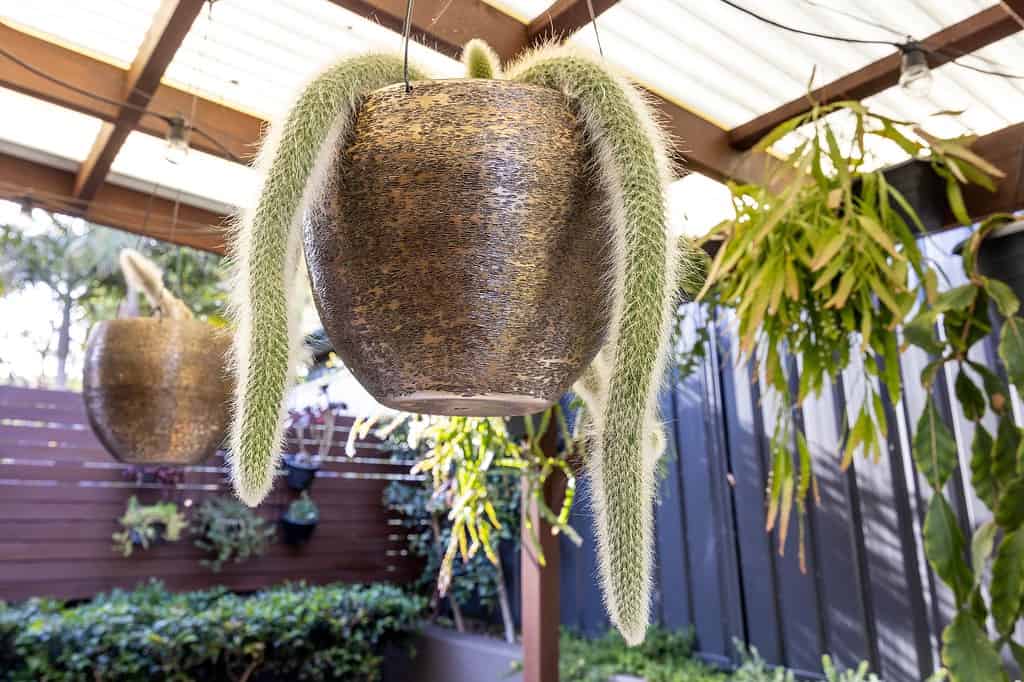
Rat tail cacti are extremely popular as hanging plants.
©Ken Griffiths/Shutterstock.com
The exact origins of the dog tail cactus aren’t actually known, though it is believed that the drought-resistant, spiny plant originated in the tropical rain forests within South America. There’s a lot of debate and mixed information about this, so we generally tend to take the general history into account when considering the care of the plant, recognizing that it is the “typical” desert cacti like the Saguaro cacti. The plant does thrive just about anywhere, with proper care, and has become an extremely popular choice among home growers of cacti and xeriscaping gardeners.
The dog tail cactus doesn’t need frequent watering and is largely drought resistant, and requires temperatures between 40 and 85 degrees F to thrive. It need plenty of light but not ridiculous amounts, so it may be grown indoors – and is, in fact, often done so to hit those temperature needs. They do best with full sun (grow lamps are often needed indoors), fast-draining soil, and for the soil to dry out completely before watering.
The rat tail cactus, on the other hand, originates in Mexico, particularly in the Hidalgo, Veracruz, and Puebla regions, at an altitude above 2000 meters, up in the foggy layers. They’ve become extremely popular in the home-grown cacti category and are now actually much easier to find in homes and gardens than in the wild.
The rat tail cactus is an easy-going plant that thrives best in direct sunlight, meaning it should be grown outdoors, when possible, or taken outdoors in warm enough weather, and given grow lights when grown indoors. It needs to be kept between 45 and 90 degrees F, often thriving at approximate room temperatures. They need a good cacti potting mix that drains well and should be watered regularly during the growing season (between spring and summer).
Dog Tail Cactus vs. Rat Tail Cactus: Special Features and Fun Facts
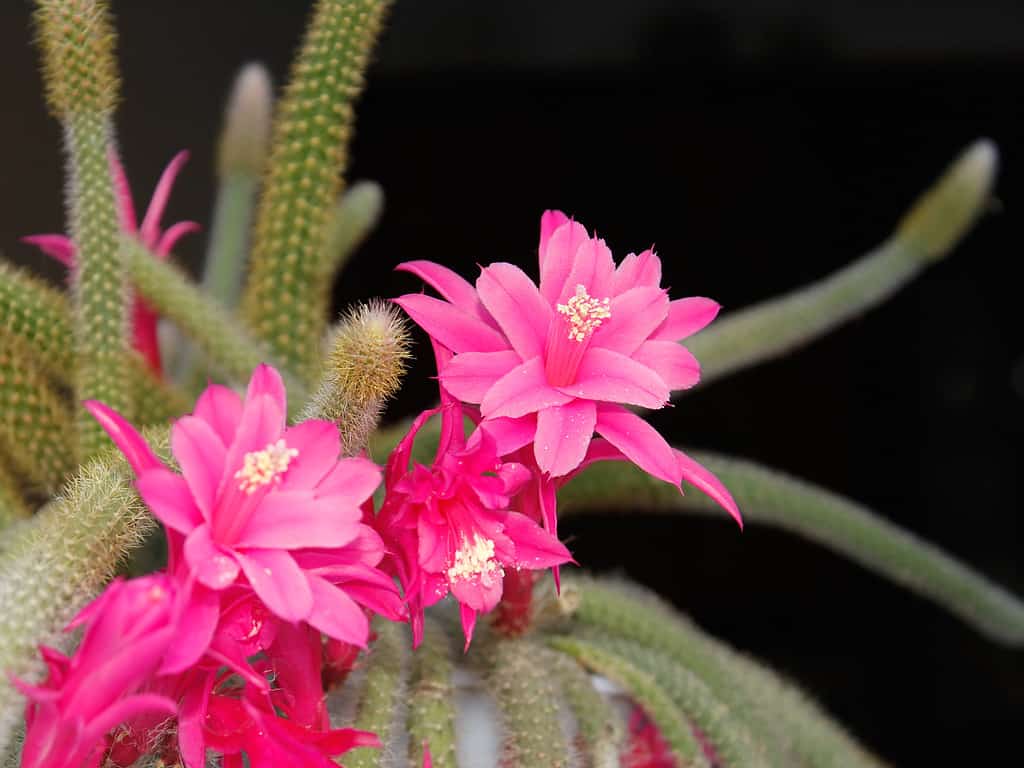
The rat tail cactus has red to pink blooms that pop out in spring and summer.
©Marykit/Shutterstock.com
The exotic dog tail cactus is an intriguing plant with unique cylindrical leaves covered in clusters of sharp little spines. The trailing cactus, like the rat tail cactus, has some fun facts that you might find pretty interesting.
- A dog tail cactus or a rat tail cactus is one of the best cacti plants for a hanging basket. The trailing of their leaves makes them uniquely attractive for this use and can be particularly good for their health, as well, as the leaves won’t droop and rot as they might do in some other planter settings.
- While cacti belong to other families than the orchid, the dog tail cactus’s flower actually resembles an orchid and comes out between March and July, making it a fairly long blooming period. The flowers are particularly fragrant and come in white or pink.
- Interestingly, the rat tail cactus is far more popular as an indoor plant than a landscaping plant in recent years – and has become more prolific in home use than can be found in the wild. The rat tail cactus is termed a threatened cactus because of this.
The photo featured at the top of this post is © Marykit/Shutterstock.com
Thank you for reading! Have some feedback for us? Contact the AZ Animals editorial team.






